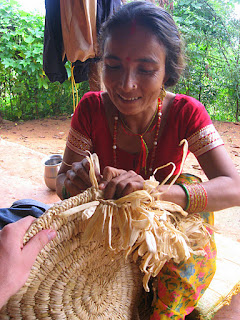GAGRI and GHAITO are the basic water vessels that are used in Nepal to store water in house for different purposes especially in places where there is no 24 hour water supply in the house or in villages where there is a common tap. In the above picture the top one is GAGRI and the bottom one is GHAITO.
There is mainly two basic differences in GAGRI and GHAITO. The first one is visible in the picture above i.e the shape; GAGRI is long and slender whereas GHAITO is more round and curvy. The second difference however is due to the raw materials used in its making. The first one is made up of metal and the latter is made up of clay. GHAITO usually is plain as there is rarely any carving done in clay goods but GAGRI is more versatile in its appearance and it is made up of metal. A GAGRI can be simple with no carving or be exotic with all the metal designs around the body.




























